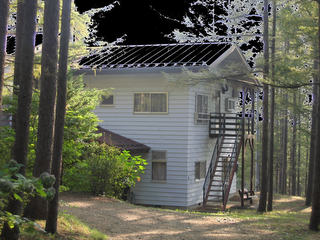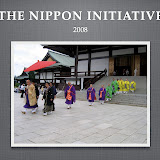 Tuesday, October 17
Tuesday, October 176:35 a.m.
At the Camp
We are staying at a camp that was built by BMM missionaries a generation ago. The camp is nestled away near the top of a small mountain among a grove of sixty to seventy foot high pine trees, which in most cases have trunks that are 24 inches or less, mostly less, in diameter. The beauty here is remarkable.
Nearby, at a slightly higher level, there is a cemetery owned by the camp. It is, of course, a Christian cemetery; that is to say that only Christians are buried there. Special permission had to be received from the government in order to make such a place. Additional special permission had to be received to be able to bury the deceased. Normally people are cremated. Their ashes are stored in jars, and their “burial” site is marked by large above-ground tombstones. Some of the markers are quite large and elaborate. They can be expensive as well, costing upwards to $50-60,000 US. These are often placed on a plot of ground on the side of a mountain, which becomes a shrine and a kind of altar used for ancestor worship. Of course, none of that kind of thing goes on at the cemetery at the camp. The markers here are small rectangular pieces of granite, engraved with information about the deceased and usually also with a cross. Oddly enough, the cross symbol elicits a feeling of joy when you see, even though a person has died, since it indicates that at least in this one case there was a person out of the millions of others who did not end his or her life with the knee bowed to Buddha or with the tongue confessing some Lord other than Jesus.
The facilities here are typical for a camp, although this camp is much larger and the facilities seem to be much nicer than what we saw near Seki. We are staying in a one bedroom apartment that is part of the camp’s main building. The apartment also features a small kitchen and living room, a shower room that includes a sink and a washer in a separate area, and a toilet. What we might call “the bathroom” here is called “the toilet”. If you ask to use the bathroom, you will be shown to a separate room where you will find a bath tub and shower. The toilet is always contained in a different room. Also, the shower and bathtub are set up quite differently than ours. They are in the same room, but the bathtub is never used, and I do mean “never!”, for taking a bath with soap. It is a grave offense to get into a bathtub still needing a bath or to somehow allow soapy water to from your shower to mix with the water that usually is standing in the tub. The shower is not contained in its own little walled-in area. It is simply part of the larger shower room, complete with a drain in the floor, that also contains the bathtub. In some case, where there is no shower-head faucet, you are expected to sit on a little stool to bathe, using a small plastic bowl to scoop warm water from the bathtub to pour on yourself after you soap up. One more observation and then I’m finished with this topic. Neither bathrooms nor toilets are made for someone who is 6’ 3”.
Nevertheless, we are very comfortable here. Houses and other buildings like this one here do not have central heat or air conditioning. Last night, the outside air temp was around 5 degrees centigrade (multiply by 9, divide by 5, add 32 and you have the temp in Fahrenheit). The inside temp hovers in the teens; however, there is a small, but adequate portable heater that we are using in the mornings to bring the room up to a warmer temp. As I say, we are very comfortable, and we are grateful for the Christians in this area making the facilities available to us.
Yesterday, Elliott spent the day playing around the camp as Dale did some catching up with various tasks and spent time interacting with Romy, the 25 year-old daughter of the Takahashis, a pastor and wife who live just down the lane. I spent the day with Nobby Tajima, driving to see two different pastors and their wives, along with their churches. I will write more about that in another post.
Before closing, I want to explain something I wrote in the first paragraph of this post. I wrote that the camp had been built by missionaries of “a previous generation.” Christians and churches flooded Japan with missionaries in the years that followed WWII. Many from that generation since then either have retired or gone on to be with the Lord. In the case of BMM, there were more than 40 missionaries here twenty years ago. Now there are nine. The missionaries of yesteryear served with distinction and great vision for the future. Unfortunately, no one seems to be stepping forward to take their place, resulting in a severe strain on every aspect of the ministry here.

No comments:
Post a Comment